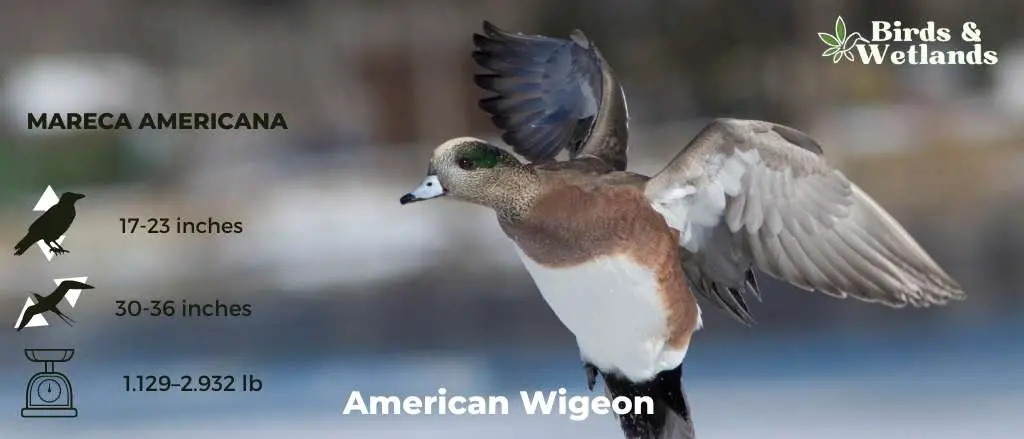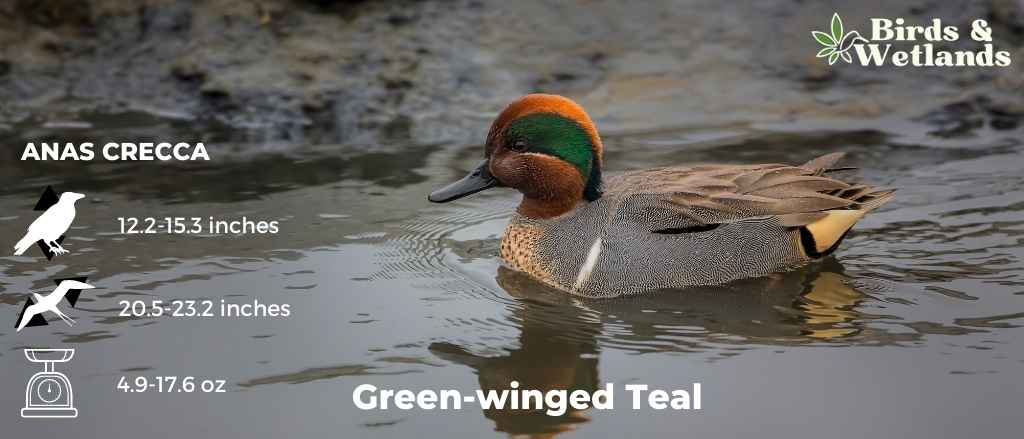Ducks with green heads, are a captivating subject for bird enthusiasts and nature lovers alike. Their distinctive green head, found predominantly in males, sets them apart in the avian world and sparks curiosity about their unique characteristics.
Understanding the fascination with these ducks, it’s important to address common questions about their behavior, habitat, and mating rituals. Their vibrant plumage and social behavior are not just visually appealing but also play a significant role in their survival and breeding.
For birdwatchers, amateur naturalists, or anyone intrigued by wildlife, exploring the world of these green-headed ducks offers a glimpse into the intricate balance of nature. Their presence in various environments, from urban parks to wild wetlands, makes them accessible and relatable, building a natural connection between us and the avian world.
Key Takeaways: Ducks with Green Heads
- Male Mallards are known for their vibrant green heads and the most common duck with a green head. This distinct coloring makes them one of the most recognizable duck species.
- The green head is a key feature during mating season. It plays a crucial role in attracting female ducks and signaling health and vitality.
- Green-headed ducks often inhabit wetlands and lakes. These environments provide the ideal habitat for feeding and nesting.
- Their plumage changes seasonally. Outside the breeding season, male mallards’ green coloration fades, making them less conspicuous.
- Diet influences the vibrancy of their green color. A healthy diet rich in certain nutrients enhances the intensity of their head’s green hue.
- These ducks are highly adaptable. They can thrive in a variety of environments, from rural wetlands to urban parks.
- Green-headed ducks are often migratory. They travel long distances between breeding and wintering grounds, adapting to different climates.
- Conservation efforts are crucial for their habitat. Protecting wetlands and natural habitats is key to the survival and health of these ducks.
Male Wood Duck

The wood duck (Aix sponsa) is a medium-sized perching duck native to North America. They are known for their striking appearance, reddish-brown chests, iridescent feathers and intricate pattern of colors. The male wood duck is particularly showy, with a green head, white neck ring, black and white markings on the back and chestnut-colored breast.
Wood ducks are found in various habitats, including freshwater wetlands, swamps, and river valleys. They are well-adapted to life in these environments, with dense, insulating down feathers and webbed feet that help them swim and forage for food.
The wood ducks eat seeds, acorns, and other plant material, but they will also feed on small insects and crustaceans. In the summer, they will also consume large quantities of insects, which provide them with the necessary protein to molt and grow new flight and tail feathers.
The breeding season for the wood duck typically begins in the spring, when males will start to display and engage in courtship behaviors. The female ducks will build a nest in a tree cavity, often near water, and lay a clutch of 7-15 eggs. After hatching, the ducklings will leave the nest within a day and swim with their mother.
Wood ducks are common in the Pacific coast and many parts of the Pacific northwest.
Male Mallards

The mallard species (Anas platyrhynchos) is a dabbling duck that is found throughout the world. It is the most common and widespread duck species and is also one of the most recognizable due to its distinctive appearance.
The mallard has a distinctive green head, iridescent neck, brown breasts, white underbelly and blue patches or iridescent blue feathers called speculum on the wings. The wings of a mallard produce a characteristic faint whistling noise when taking off.
The male mallard duck is easily recognizable by its bright yellow bill and striking blue wing patches, while the female, which looks like a mottled duck, has a brown body with a creamy white ring around her neck.
Interestingly, males don’t quack, only female emits quacking sounds.
These dabbling ducks are highly adaptable and can be found in various habitats, including freshwater and saltwater wetlands, ponds, rivers, and urban parks. These large ducks are omnivores, and their diet consists of various foods, including plants, small animals, fish eggs and invertebrates.
Breeding season for the mallard ducks typically begins in the spring, when males start to display and engage in courtship behaviors. The female mallard will build a nest on the ground or in a cavity and lay a clutch of 8-13 eggs. After hatching, the ducklings will leave the nest within a day and swim with their mother.
Mallards are the most common ducks hunted in many parts of the world. Many waterfowl hunters admire the beautiful green heads of male mallards. Mallards are very adaptable species and can live and breed anywhere, which makes them a good choice for farmers who want to raise waterfowl. However, its ability to crossbreed with other ducks poses a threat to indigenous waterfowl’s genetic integrity.
Mallard bones were found in the digestive tract of ancient human remains and other fossil bone deposits in Europe, with no credible candidate for a local progenitor species. Most domestic duck breeds derive from the mallard duck.
Common Goldeneye Male

The common goldeneye duck (Bucephala clangula) is a medium-sized sea duck from the genus Bucephala, the goldeneyes. It is a migratory species that breeds in the northern hemisphere.
The adult males have iridescent dark green heads, a white neck and breast, and a black back and tail. The females have brown heads with a whitish throat and a dark eye patch.
The common goldeneye is a strong and powerful flyer, reaching speeds of up to 55 mph. It is an agile diver, able to dive to depths of up to 60 feet in search of food. It feeds on aquatic invertebrates, fish, and amphibians.
The common goldeneye is a social bird often seen in large flocks during migration. It nests in tree cavities, often in the hollows of old willow trees. The female lays 6-12 eggs and incubates them for about a month. The young fledge at about seven weeks of age.
American Wigeon Male

The American wigeon (Anas americana) is a medium-sized duck found in North America, from Alaska to Mexico. It is a member of the dabbling duck family and is closely related to the Eurasian wigeon.
The American wigeon is a green-headed duck with a distinctive white forehead. The body is mostly grayish-brown, with white patches on the sides, black-tipped wings and a white rump. It also has green stripes on both sides of its head.
The male American wigeon has a bright chestnut breast and a white stripe along the side of its neck. The female is similar in color but with a duller chestnut breast.
The American wigeon is a dabbling duck, meaning it feeds by tipping forward and submerging its bill in the water to feed on aquatic plants and small invertebrates. It frequently visits open fields, feeding on grasses, grains, and other vegetation.
The American wigeon is a migratory species, with some populations wintering along the Pacific and Atlantic coasts and southern United States and Mexico.
The American wigeon breed predominantly in western Canada and Alaska and some parts of the Rockies and the Midwest.
The American wigeon nests in shallow scrapes on the ground, lined with grass and down. The female lays an average of 8-10 eggs, which are incubated for about 25 days. The chicks are precocial, meaning they can leave the nest shortly after hatching.
The American wigeon is a fairly common duck, but its population has declined recently due to habitat loss and hunting. It is currently listed as a species of least concern by the IUCN.
Greater Scaup Male

The greater scaup, a diving duck species, is a captivating bird with its distinctive black and white feather pattern. With its bright green head, striking white neck, and black back, the greater scaup is a handsome bird to behold.
In flight, the wingspan of this mid-sized duck is striking, with white feathers on the trailing edge of the wings contrasting against its dark body. During the breeding season, the male greater scaup is particularly impressive, with its iridescent feathers on the head and neck and white belly.
In terms of habitat, the greater scaup is a bird of open water, favoring large lakes, bays, and estuaries. During migration, they may be found on smaller bodies of water, including ponds, rivers, and the open ocean. During the winter months, these diving ducks can be found along the Atlantic and Pacific coasts of North America and on the Great Lakes.
The diet of the greater scaup consists mainly of mollusks and crustaceans, which they obtain by diving underwater in search of food. They are skilled divers, able to reach depths of up to 30 feet in search of their preferred food sources.
The greater scaup has a unique feeding strategy, diving and “tipping” – inverting its head to reach the bottom of the water – to extract its prey from the sediment.
In terms of behavior, the greater scaup is a social bird, often found in large flocks during migration and winter months. During the breeding season, they are more solitary, pairing up to mate and raise their young.
The female greater scaup builds the nest, usually a simple platform of grasses and leaves, on the ground near water. The male remains nearby, defending the territory from other males.
Green-winged Teal Male

The green-winged teal is a small, dainty waterfowl capable of reaching speeds of over 50 miles per hour in flight. This agile bird is a common sight on ponds, marshes, and shallow lakes, where it feeds on a variety of aquatic plants and small invertebrates.
The male green-winged teals have mottled black and white bodies, a chestnut head with a green stripe running along its eye and a green wing patch on its wing. During the breeding season, the male’s feathering becomes even more vibrant, with its head taking on a glossy, iridescent green sheen.
While less conspicuous, the female is no less beautiful, with her rich brown coloring and delicate white markings.
One of the most remarkable features of the Green-winged Teal is its rapid breeding cycle. As soon as the ice melts on northern ponds and marshes, these small dabbling ducks begin their frenzied courtship and nesting behaviors.
The male wild duck performs an intricate dance, lifting his head and tail high and calling out with a sharp whistle. Once a mate is chosen, the female builds a nest of grasses down near the water’s edge, where she will lay her clutch of eggs.
The green-winged teal is an important species in many wetland ecosystems, serving as prey for various predators, including hawks, foxes, and mink.
Most green-winged teal migrate to the southern parts of the continental United States, while some ducks remain in their breeding grounds all year.
While the green-winged teal is not currently considered threatened, its populations have declined in recent years due to habitat loss and degradation. Conservation efforts, such as wetland restoration and protection, are essential to ensure the continued survival of this charming and vital species.
Northern Shoveler Male

The northern shoveler (Anas clypeata) is a dabbling duck native to the northern hemisphere. It is a medium-sized duck, typically measuring 18-20 inches in length and weighing between 1-2 pounds.
It has a large, spoon-shaped bill with bright yellow, reddish-brown sides and black coloring and a distinctive white patch on its cheek. It has an iridescent green head and neck, while its body is mottled brown, with a white chest and belly. Its wings are brown with white-edged feathers, and its tail is black. The females have bright orange beaks and a blue shoulder patch. Juveniles have grayish brown heads.
The northern shoveler is a migratory species, breeding in the northern parts of Europe, Asia, and North America. It is found in various wetlands, including marshes, ponds, lakes, and slow-moving rivers.
Northern shovelers nest on the ground. During the breeding season, they feeds mainly on aquatic insects and other small invertebrates near their nesting sites. In winter, it feeds on seeds, grains, and other plant material.
Key Takeaways
- There are many ducks species with green heads, most of which belong to male ducks.
- Most domestic ducks are related to the mallards.
- Mallards, which have blue speculum feathers and bright yellow bills, are the most recognizable ducks in the world.
- These ducks with green heads migrate to the southern parts of United States, along the Gulf Coast, with some flocks venturing further south into Mexico and Central America.
- Mallards have blue patches called speculum on their wings.


